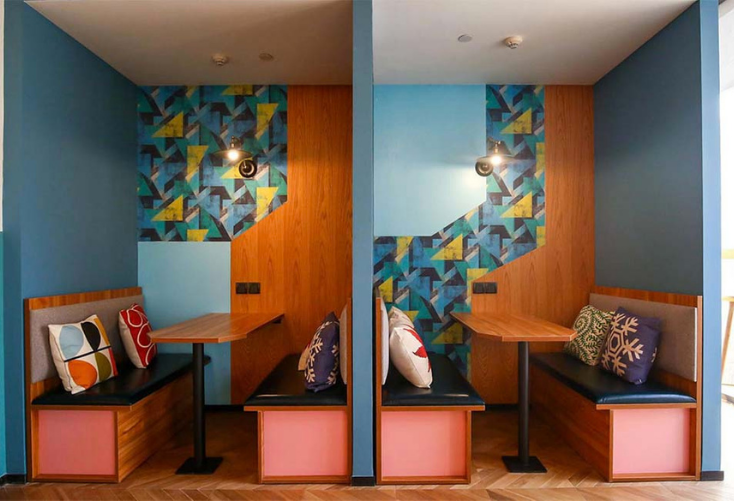Hand selected flexible workspace news from the most reliable sources to keep you ahead of the pack. We find all the latest news, so you don’t have to. Morning and afternoon updates. Stay in the know.
Here’s what you need to know today:
- Philadelphia’s Office Market Manages To Stay Afloat NEW
- The Future Of Work Will Be A Hybrid Place NEW
- India’s Coworking Firms Adjust Business Models NEW
- IWG Reveals Smaller Coworking Concept
- Manhattan Office Availability Hits Highest Levels Since 2009
- Preventing Remote Worker Burnout
Philadelphia’s Office Market Manages To Stay Afloat
Philadelphia’s commercial real estate market is managing to stay afloat throughout the uncertainty of the current economy.
Several third-quarter office research reports from real estate firms have found that asking rent has remained steady in the city while vacancy has risen.
According to Savills, transactions fell by 48% quarter-to-quarter and many of leases that have been signed have come from renewals.
Although there has been a clear dip in leasing activity, asking rents have remained stagnant due to landlords’ apprehension of presenting the market as declining.
Kevin Maloney, senior vice president of CBRE, says that owners will likely make tenant improvements so occupiers can spend less before they actually adjust their rent.
One of these improvements includes landlords offering more flexibility on the length of their leases, particularly as receiving economic relief from the government becomes increasingly far-fetched.
Now, large companies are looking to adopt flexible offices in suburban areas in order to bring workers back into the workspace, without using public transit.
“Anecdotally, my brokers have reported that young professionals do not want to work from home, because starting a career means building a network,” said Joseph Gibson CBRE Senior Field Research Manager. “And how do you build a network via Zoom? So workers will want to come back to the office, and there’s no longer the apocalyptic fear that there was in spring.”

The Future Of Work Will Be A Hybrid Place
Companies are at a crossroads as we enter the latter half of the year. Many are considering whether they should continue operating remotely, or begin making the transition back into the office.
What has become abundantly clear is that remote working will have some sort of role to play for the future of work. However, businesses will need to confront the downsides of this work arrangement that have been highlighted over the last few months.
That is why organizations should consider adopting a hybrid approach that supports both at-home and in-office work arrangements. But what does that mean for the office itself?
For starters, large headquarters will need to focus on offering more flexible arrangements for employees coming into the office only two or three days a week. Additionally, desks will need to be spaced appropriately to accommodate distancing needs, while sanitation practices will have to be increased.
Companies who do not have a large central office may turn to coworking spaces outside of big cities to support workers who want to come into a workspace, and keep them from using public transit.
Technology has played a key role in the transition to remote working, and it won’t stop there. Not only can organizations continue using video conferencing and collaboration software, but they could also invest in touchless technology to ensure that the workspace is as clean and safe as possible.

India’s Coworking Firms Adjust Business Models
Prior to the pandemic, coworking was one of the most promising sectors in the commercial real estate industry. With entrepreneurial communities growing globally and technology startups flocking to these shared spaces, it seemed like the sector was unstoppable.
Then the lockdowns happened, and seemingly overnight, these once bustling buildings became deserted.
Several coworking firms have now reported a drastic dip in business. For instance, Bengaluru-based BHive Workspace CEO Shesh Palikar said the company has seen only 60% of its original revenue.
“The immediate disruptions were observed in the form of client exits, non-renewals, and delayed payments,” a spokesperson at the Indian Workspace Association said. “This has caused contractual occupancy of the industry to fall between 40-50% of what we saw in pre-COVID-19 times.”
Smaller coworking firms are at high risk of closing for good, which could lead to 3.2 million square feet of unoccupied space in the country according to Knight Frank India.
However, some experts are confident that smaller operators could survive depending on the company’s business model.
Aditya Verma, founder of The Office Pass (TOP), said that he believes coworking firms should look into broadening their client base beyond startups in order to secure business if their smaller users have to walk away from their coworking leases.

IWG Reveals Smaller Coworking Concept
IWG has revealed it will begin offering a new coworking concept that will be smaller than its current Spaces brand in an effort to accommodate the new normal of the workplace.
The new workspace aims to attract workers who are hesitant to return to their main office after working from home for months, but still miss the atmosphere of a physical workspace.
Companies would be able to use this new platform to set up satellite offices in suburban areas closer to where employees live, helping alleviate the need for public transportation.
“The pandemic has precipitated a meaningful pullback in demand for this month-to-month space as tenants revert to the rent-free work from home alternative,” a report from ASB Real Estate Investments stated.
During the first half of 2020, IWG reported a loss of over $300 million, compared to its $40 million in profits it made the previous year as demand for coworking dwindles.
The company recently threatened to declare its Regus subsidiary insolvent in the UK last month in an attempt to get its landlords to reduce rent.

Manhattan Office Availability Hits Highest Levels Since 2009
Office space availability in Manhattan is at its highest levels since the Great Recession.
According to Savills, the borough saw 2.5 million square feet of sublease space be added to the market during the third quarter. Now, it accounts for 26.7% of all available space.
“We’re kind of seeing the parallels to what happened during the global financial crisis,” said Danny Mangru, research director for Savill’s’ Tri-State region. “We anticipate by the end of the year it’s going to surpass the global financial crisis peak.”
Additionally, a new report from Newmark Knight Frank believes that an additional 1.1 million square feet will be added to Manhattan’s market over the next few weeks. This increase is expected to come mainly from coworking firms giving back their office spaces.
For instance, Regus recently filed bankruptcy for six of its locations in Manhattan, while Knotel revealed it would be cutting down its portfolio as it faces lawsuits from its landlords over missed rent.
Since the beginning of the pandemic, Manhattan has lost 23 coworking locations equating to 1.2 million square feet. Additionally, office rents have started to drop for the first time since the start of the pandemic, with Midtown South seeing the biggest drop according to Newmark Knight Frank.
Despite the several losses, leasing activity has started to pick up from the previous quarter, with 4.6 million square feet of deals being signed. This marks a 29.6% increase from the second quarter, but a 44% drop from the same time last year.

Preventing Remote Worker Burnout
Microsoft’s Work Trend Index report finds that the pandemic has led to increased burnout, more workplace stressors, decreased communication and more.
In fact, the study found that one-third of respondents said their lack of commuting was hurting their boundaries between work and home life.
That is why it is vital for business leaders to help employees during these challenging times. Although many remote workers have likely adjusted to their new style of working, encouraging them to establish healthy boundaries and closing the “empathy gap” can allow them to be more satisfied in their positions.
“Closing the empathy gap requires an understanding of what’s happening behind the Zoom camera, terse slack message or emotionless email,” said Paul Rubenstein, chief people officer at Vancouver-based workplace analytics platform Visier.
One of the more impactful methods a company can make to prevent burnout is to improve communication lines with their employees. This includes daily check-ins and clearly expressing to workers that they have a clear line of communication with their colleagues and managers.
More than ever before, leaders need to invest in remote work culture and nurture social interaction in order for employees to alleviate isolation and avoid burnout.
Lastly, the most important strategy for employers to have moving forward is simply supporting their workers. Everyone has experienced life-altering circumstances over the last several months that has likely had a negative impact on their mental health.



 Dr. Gleb Tsipursky – The Office Whisperer
Dr. Gleb Tsipursky – The Office Whisperer Nirit Cohen – WorkFutures
Nirit Cohen – WorkFutures Angela Howard – Culture Expert
Angela Howard – Culture Expert Drew Jones – Design & Innovation
Drew Jones – Design & Innovation Jonathan Price – CRE & Flex Expert
Jonathan Price – CRE & Flex Expert














